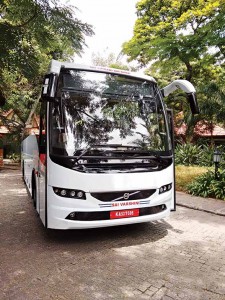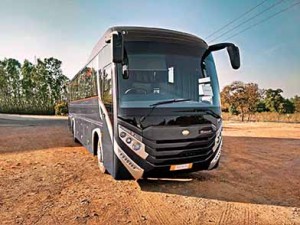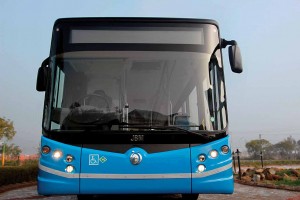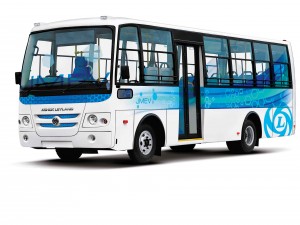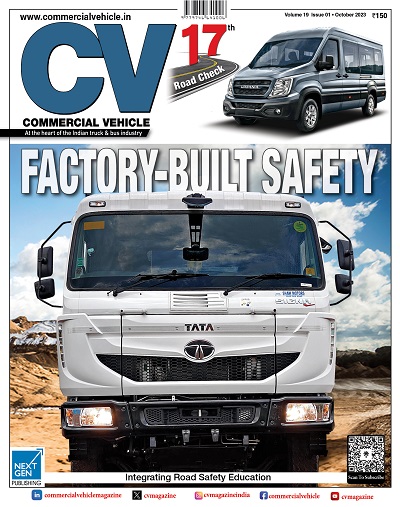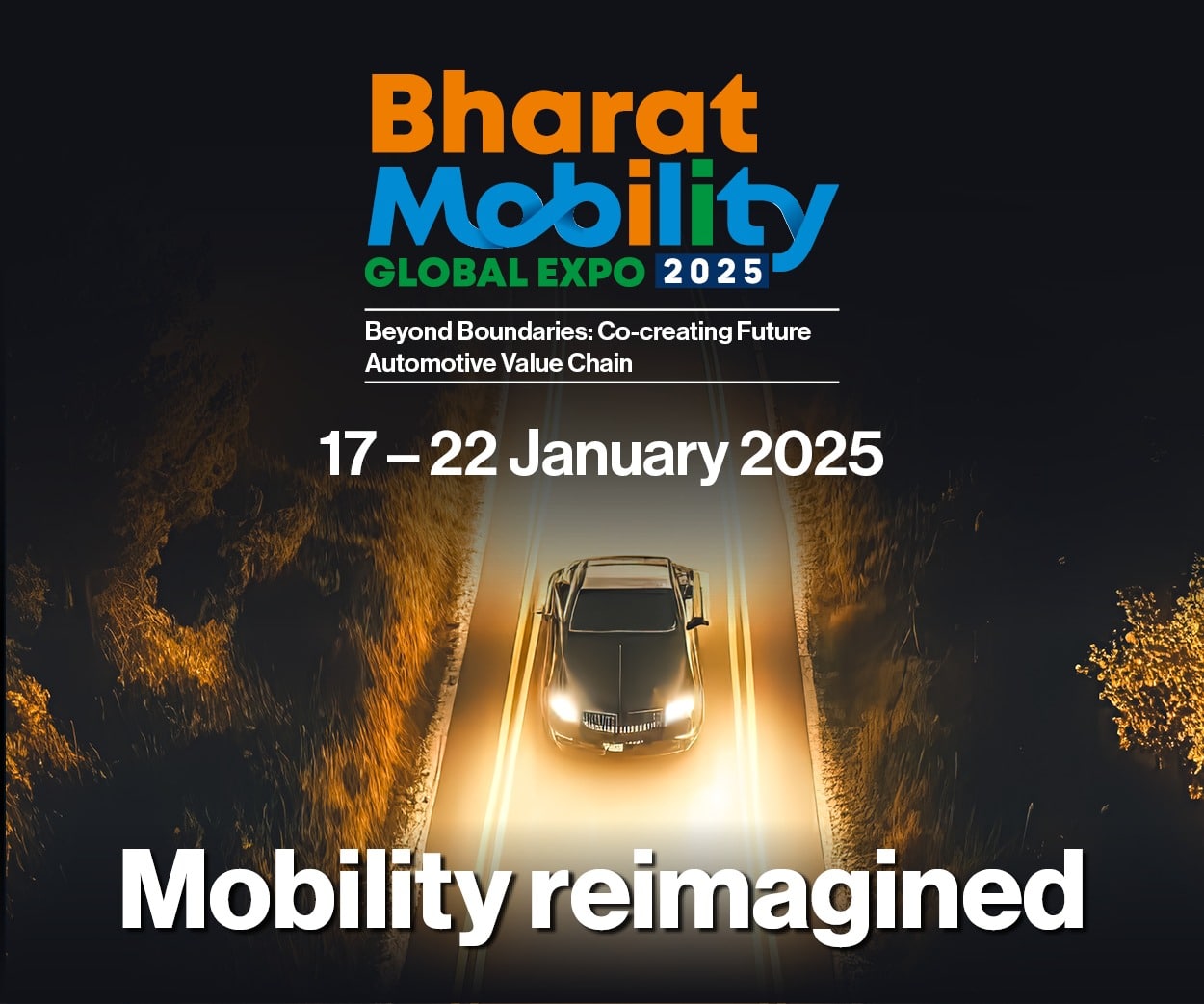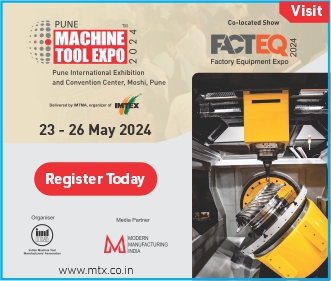Last fiscal saw the Indian bus industry change; experience growth and excitement.
Bhushan Mhapralkar
Last fiscal was a good year for the Indian bus industry. The industry witnessed growth followed by the enforcement of the bus body code (AIS 052), and the school bus code (AIS 063). Posting good growth, the industry also witnessed the arrival of sleeper bus code (AIS 119), which is claimed to be a world first. Progress was also achieved in tarmac and double-decker bus code draft. Experiencing buyout times on the back of good orders from government run State Transport Undertakings (STUs) and City Bus Undertakings (CBUs) as well as private bus fleet operators, the bus industry grew at an average 10 per cent last fiscal. Apart from the homologation of a sleeper coach built by Bangalore-based bus body builder (converter), Veera Vahana, under the new sleeper coach code in April 2017, the bus industry in India saw some exciting developments during the last fiscal. At Busworld India 2016, Belgaum-based Alma Motors displayed a tarmac coach with aggregates like engine, gearbox and axles sourced from tier suppliers like Cummins and ZF. Pointing at empowering key bus body builders like Veera Vahana, Alma, JCBL and others, the bus code, it seems, has provided the much needed direction to the Indian bus industry it looks like. Expressed Prashant Kakade, Manager & Co-Ordinator MDC, Central Institute of Road Transport (CIRT), that the bus code has had an influence of turning bus body builders into bus manufacturers. “They are now looking at sourcing aggregates from key suppliers to make their own bus that complies with the bus code regulations”.
If bus body builders continued to gather speed and mass, traditional bus manufacturers like Tata Motors, Ashok Leyland, Volvo Eicher Commercial Vehicles, and SML Isuzu did brisk business as well. Operating at the premium end of the market, global bus makers like Volvo and Scania did well. The premium bus market, driven by rear-engine buses, hovered around 1000 units last fiscal. At busworld India 2016, in an effort to retain its leadership position in the premium bus market, Volvo Buses India unveiled a two-axle 12 m long coach with a locally made 8-litre common-rail diesel engine. This engine is made at the Volvo Eicher engine joint venture at Pithampur, Indore, called the Volvo Eicher PowerTrain. The 5- and 8-litre engines made at this plant, which mirrors the processes and layout of Volvo’s Skovde plant in Sweden, are supplied in Euro6 guise to many European locations of Volvo. Said Akash Passey, Senior Vice President – Business Region International, Volvo Bus Corporation, “The inclusion of a locally produced engine addresses the demand of our customers for localised products, and would reflect on the cost and maintenance of the vehicle.” Akash stressed upon taxation as one of the key reasons why operators take long to achieve Return On Investment (ROI) in the case of premium buses. This is also said to be the reason why many city bus operators are not very keen to procure premium, low-floor rear engine buses.
Premium players eye mid-premium positions
To make a compelling case for buyers, Scania took an ethanol-powered bus route to the market. Its over three years after the first ethanol-powered low-floor 12m-long city bus began plying at Nagpur. Since then, the Swedish manufacturer is working towards supplying 55 bio-fuel city buses to the city of Nagpur. If, and how viable they are, will be known over a period of time. In a bid to tap into the emerging mid-premium position, which according to Joerg Mommertz, Chairman & Managing Director, MAN Trucks India, offers an opportunity to better specifications than the domestic budget producers, global bus makers have been introducing products while homegrown players like Tata and Ashok Leyland up their ante. In association with Alma, MAN introduced a Mammoth front-engine 12 m luxury coach in early 2016. Volvo has been pushing its UD mid-premium brand of city buses in India. It recently received an order from the twin cities of Hubli-Dharwad. Dharwad features on the Central government’s scheme of ‘smart cities’, which promises to overhaul the infrastructure and make cities ‘world-class’. Tata Motors bagged an order to supply 25 vestibule buses worth Rs.50 crore to Hubli-Dharwad in January 2017. The order followed a bigger order from 25 STUs and CBUs in September 2016 to supply 5000 buses, representing a healthy growth of over 80 per cent over last year as far as the order book went.
STUs and CBUs as growth drivers
In FY2016-17, STUs and CBUs emerged as the key bus industry growth drivers. A big surge in STU orders was witnessed last fiscal, and after a gap of nearly four years, indicating renewed focus of various state governments and city councils on public transport. With the overall commercial vehicle market in India estimated to be 715,000 units, buses make up roughly 20 per cent of it. The Indian (medium and heavy) bus market grew 7.64 per cent in FY2016-17 with the sale of 47,262 units as against the sale of 43,909 units last fiscal. The light bus market grew 3.94 per cent with the sale of 50,864 units in FY2016-17 as against the sale of 48,936 units last fiscal. Leave for the 1000-unit premium rear engine bus market, and a small chunk of rear-engine premium city bus market (that saw the arrival of a new player, JBM last fiscal) led by Volvo and Scania, the Indian bus market by and large is made up of budget mass volume buses. It is here that Tata and Ashok Leyland lead. They are followed by Eicher and SML Isuzu and others. Prominently front-engine oriented, this end of the bus market is driven by low acquisition cost, fuel efficiency, service-ability and low cost of operation.
On the back of good orders, Tata Motors grabbed the lead from Ashok Leyland in FY2016-17 as the number-one bus maker in India. For some years, the lead position separated the two by a minuscule gap of one-per cent. Said Ravi Pisharody, Executive Director – Commercial Vehicles, Tata Motors, “We clocked a growth of 22 per cent in FY2016-17 against an industry growth average of 10 per cent.” In the pursuit of higher profitability, Ashok Leyland pursued a strategy to exit some of the State Transport Undertaking (STU) businesses. Expressed Vinod K. Dasari, Managing Director & CEO, Ashok Leyland, “We decided to concentrate on innovative products.” Ashok Leyland’s stress on innovative products is not new. In 2014, the company introduced a front-engine flat-floor city-bus called Janbus. Providing a modern, albeit front-engine alternative to the low-floor rear engine premium city buses, the Janbus proved popular because it cost almost half of what a Volvo city-bus costed at an estimated Rupees one-crore. In addition to the lower acquisition cost, the Janbus was engineered to carry more people, and promised carriage of people at a lower cost. With AC optional, the bus, offering single-step entry, came equipped with an Automated Manual Transmission (AMT), an India first in buses.
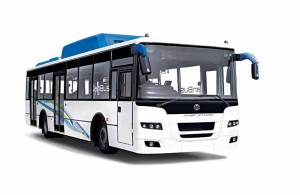
© Siephoto
Model Release: No
Property Release: No
Paseo de la Independencia, Zaragoza, Aragon, Spain
Bus technology
With the bus codes influencing the Indian bus market during the last fiscal, much technology found its way into Indian buses. AMT has proliferated since. ABS has become standard on heavier buses, and also air suspension. The market for AC buses, including retrofitment grew steadily last year. It is an estimated 20,000 and 25,000 units strong according to Pramod Verma, Vice President, Sphere Thermal Systems. It was between 12,000 and 14,000 units five years ago, quipped Verma. The demand for AC can be linked with the rising market demand for comfort and refinement. If the demand for comfort and refinement drew the demand for lighter AC buses for school, staff and tourist application in FY2016-17, many government transport undertakings – CBUs, under the Faster Adoption and Manufacturing of Hybrid and Electric (FAME) vehicles scheme, took out tenders to procure hybrid and electric vehicles. Under the aegis of the central transport minister, Nitin Gadkari, two 9m-long buses refitted with electric propulsion system were introduced in the capital city of Delhi to ferry the members of the Parliament. Tata Motors will soon deliver 25 diesel hybrid rear-engine low- and flat-floor city buses to the city of Mumbai. These mirror the CNG hybrid Tata Hispano city buses that ply at Madrid. Late last calendar year, Volvo delivered two diesel hybrid city buses to Navi Mumbai against an order for five such buses, making it the first manufacturer to supply a hybrid city bus in India. This bus is said to cost Rs.2.3 crore against the Tata Hybrid city bus, which is claimed to cost Rs.2 crore. High acquisition cost continues to be a deterrent despite a 50 per cent subsidy offered under the FAME scheme. To be precise, there is the challenge of gap-funding, which will need to be addressed.
With electric vehicle infrastructure in India lacking, hybrid buses make ample sense. CBUs however are said to be already looking at electric buses! Last fiscal saw CBUs put out tenders for the procurement of electric buses under the FAME scheme. Perhaps anticipating this, Tata Motors, at the Auto Expo 2016 premier fair, displayed a 9m electric bus based on its Ultra platform. JBM in association with Solaris displayed a 9m electric bus with a pantograph. Not to be left behind, Ashok Leyland, which owns Optare, unveiled a 9m electric bus called Circuit in early 2017. The move up to electric buses traces its roots in the first phase of emission reforms in 2008, which led to Delhi city buses being retrofitted with CNG almost overnight. Most Mumbai city buses also run on CNG. CNG however has posed limitations in terms of availability and infrastructure. The operating costs of CNG buses are proving to be higher than LNG. Promising to overcome to limitations posed by CNG, Tata Motors recently showcased a LNG city bus at Trivandrum.
As government run STUs and CBUs continue to call for modern yet cost effective buses, private operators continue to up the efficiency of their operations by deploying technology and modern buses. For private bus operators, complex bus rules and high taxation structures, which differ from state to state, continue to be a challenge. Business for them comes from government contracts, corporate staff transportation, tourist transportation, and from the transportation of school children. They accurately map the flow of people such that school and staff bus operators render to tourist transportation during weekends. Demand for large underfloor storage compartments in buses is on the rise when it comes to heavier, long-haul tourist buses. This is also driving the the need for powerful engines. With infrastructure improvements, the number of people travelling by bus continues to rise. The number of consignments transported by buses is also increasing. It serves as a good secondary earning medium. Especially during off-season. Expressed B Anil Baliga, Executive Vice President – Bus & Application, VE Commercial Vehicles, “A lot of the operator profitability comes from cargo.“
Comfort and fuel efficiency improvements
Increasing STU exposure, companies like Eicher are deploying technology to improve NVH and comfort on front-engine buses. Eicher is one of them. Said B Anil Baliga, that their focus is on NVH of front-engine buses. On the subject of high preference to front-engine buses in India, Baliga mentioned, “Indian operators are smart. They know their Return On Investment (ROI) very well. The trick lies in selecting the right route and the right bus.” The enforcement of BSIV emission norms from April 01, 2017, has ensured that most buses come with a common-rail turbo-diesel engine. Most heavy buses come with SCR after-treatment technology. This has had a definitive effect on acquisition cost, and operating complexity, what with the need to opt for annual maintenance contracts with authorised dealers rather than depend upon private garages that are much cost effective. With fuel efficiency at the forefront of operator equations, it will not come as a surprise that Daimler India Commercial Vehicles (DICV) is aluminium extensively in the building of its bus bodies. Use of such a technology is also expected to keep it ahead of its competitors, and body builders that are moving up the value chain. Taking advantage of the bus code, bus body builders (convertors) like Veera Vahana, JCBL, Alma Motors and others are investing to turn into bus manufacturers by procuring key aggregates like powertrain, suspension, etc., from the respective tier suppliers. Signalling bus industry transformation, the growing equation between convertors and aggregate manufacturers is starting to spring surprises. At Busworld India 2016, Alma Motors displayed a tarmac bus with aggregates procured from tier suppliers like Cummins and ZF.
Exports
If bus body builders are turning into bus manufacturers, CV majors like Ashok Leyland and Tata Motors are concentrating on exports for growth. T Venkataraman, Senior Vice President – Global Bus, Ashok Leyland, puts the domestics and export sales ratio at 58:42 as far as his company is concerned. Buses made by his company are exported to the Middle East, SAARC and African markets. In addition to this, Ashok Leyland also produces buses at a facility at Raas Al Khaimah in the Middle East. This plant has a capacity to produce 1200 units per year, and is helping the company to cater to the African markets. Ashok Leyland is also exporting Euro5 buses to Ukraine as well. Tata Motors is also applying thrust on exports. It exports buses to various African markets, Russia, the Middle East, and other destinations. The company claims to have achieved a leadership position in the medium bus segment in the Middle East. Eicher exports buses to SAARC markets; to the Middle East and African markets. Similarly, SML Isuzu exports staff, school and luxury buses to SAARC and African markets.
Light bus market
With the participation of Japanese players like SML Isuzu, the light bus market is transforming. Tata Motors continues to lead this market. Its lighter buses flaunt quality bodies built by Marcopolo. Daimler India Commercial Vehicles is BharatBenz lighter buses are also finding good acceptance in the market for staff and tourist bus transportation. A strong player in this segment is SML Isuzu and Eicher. Both has there own bus body building plants. Both have a considerable presence in the school bus sector. A pleasant change in the school bus market is Ashok Leyland’s Sunshine. Claimed to be the first bus to comply with roll-over crash norms, the bus saw the company seek the feedback of students, parents, school authorities, drivers and others. Stress was laid on minimising blind spots and offer a cheerful travel experience. The interior of the bus is thus colourful; there are safety elements built in, and the seats employ anti-bacteria fabric. With the Nissan collaboration behind it, Ashok Leyland is expected to bring out new products in the LCV people mover segment. It currently has the Mitr. A 8 metre-long version of the Mitr will be launched soon.
Industry future
With crash norms expected to roll out in next fiscal, and the move up to BSVI emission norms scheduled for 2020, the Indian bus market has only one way to go – to advance quickly to close the gap with buses that are offered in the advanced market at a fraction of the cost. The export of 12m rear engine inter-city bus by Volvo to Europe has proved that there is a distinct price advantage in buiding a world-class bus in India. Initiatives like sleeper and double-deck coach codes by the government is empowering bus body builders to turn manufacturers. This spells good for the growth of the Indian bus industry even as the traditional CV manufacturers look at increasing their reach into the international markets. It is not for nothing, that the Indian bus market is expected to grow at a CAGR of 10 per cent by 2020. It is all about progressing demand, value and luxury after all.




